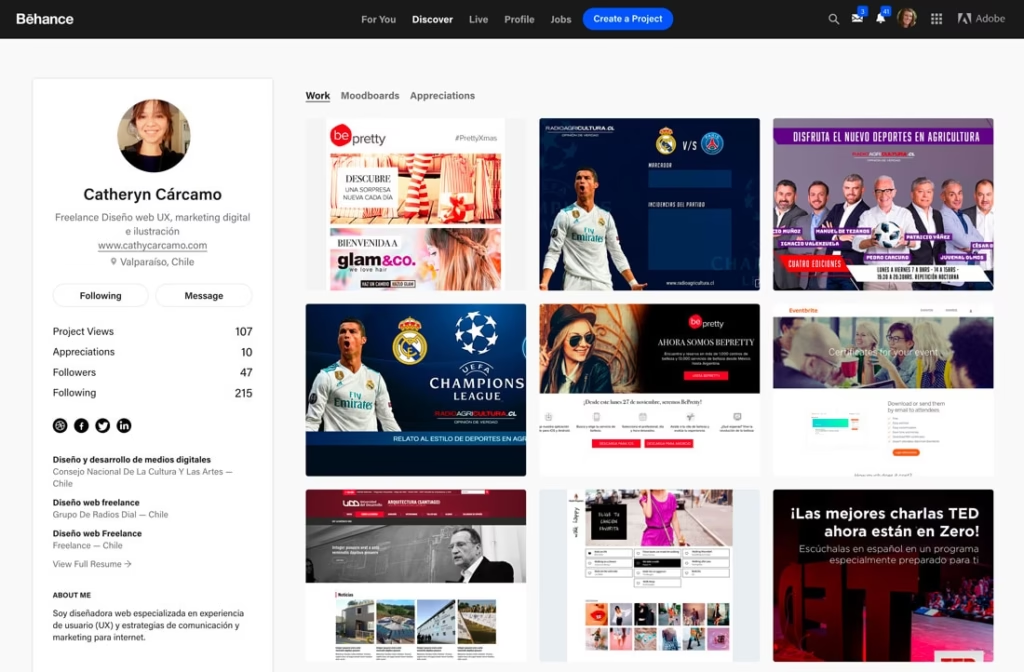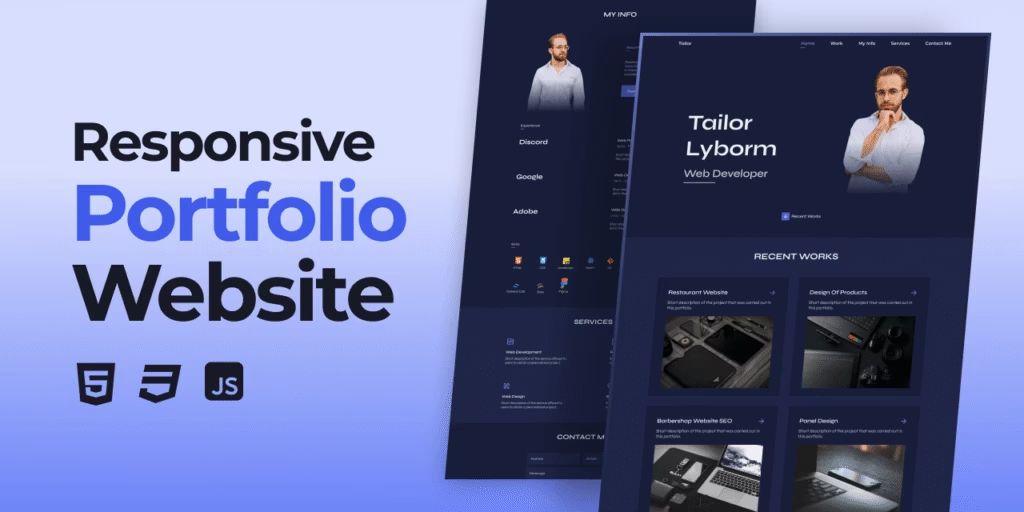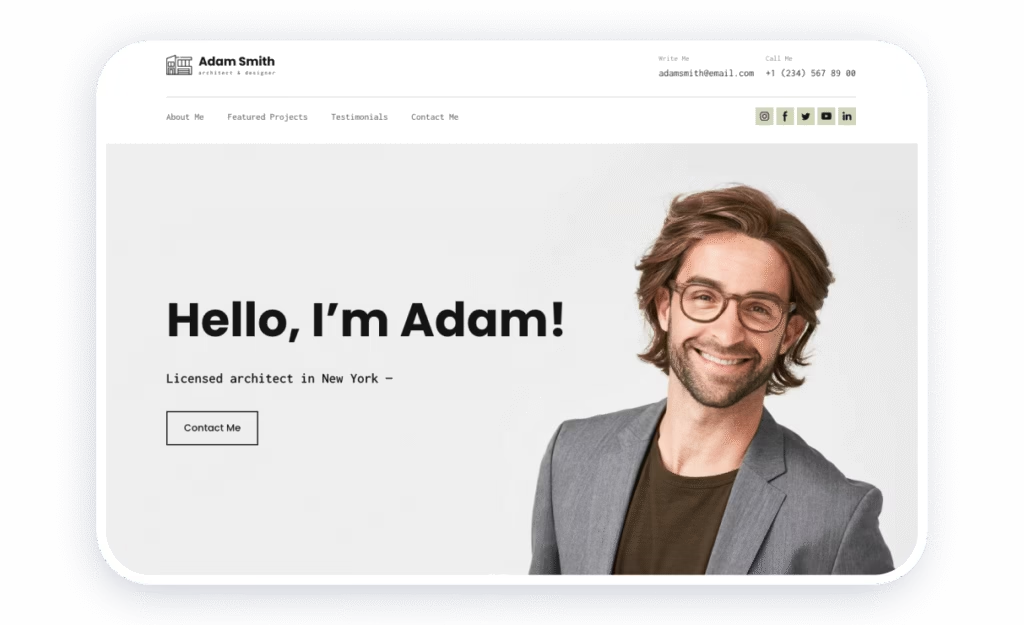Looking at a beautiful portfolio and still hearing crickets? That is common. Portfolio sites that win clients are built around outcomes, proof, and easy next steps, not just pretty images.
This guide shows how to turn a portfolio site into a client engine in 2025. It covers case studies over galleries, mobile-first layouts, fast load times, light interactive touches, simple SEO wins, and clear calls to action. Designers, developers, writers, photographers, marketers, and consultants will get a plan they can ship.
Here is what comes next: plan a client-first offer, structure pages that sell, get found with SEO and speed, convert with CTAs and trust, and improve with analytics and promotion. At the end of each section, there are quick action steps to apply right away.

Start with a client-first plan: niche, offer, and proof
A strong portfolio starts with focus. The site should talk about a buyer’s problem and the outcome they want. Tools and talents are secondary. Use a simple worksheet: niche, ideal client, one core offer, outcomes, and proof assets.
A focused portfolio ranks more easily, reads faster, and feels confident. It also speeds up sales calls because buyers know what is on the menu.
A quick note on tools: pick what helps ship faster with speed in mind. For ideas and examples, review these roundups of portfolio builders and examples on Shopify’s portfolio website guide for 2025 and these freelance marketing website examples.
Define one clear service and an ideal client..
- Pick a narrow niche or use case, for example, brand identity for local cafes or Shopify setup for small boutiques.
- Describe the ideal client: industry, size, budget range, main pain point, timeline.
- Choose one primary service or package with a simple description and a starting price or range.
- List top outcomes clients want: more leads, faster site, stronger brand, higher conversions.
- Avoid long menus. A focused offer is easier to buy and rank for.
Action steps:
- Write one sentence that defines niche and ideal client.
- Draft one service package with a starting price.
- List 3 outcomes clients care about.
Write a value proposition that speaks to outcomes
Use this template: “[Service] for [ideal client] that delivers [result], so they can [benefit].” Keep it to one or two lines for the homepage hero.
Replace tool talk with outcome talk. A line like “Stop losing leads to slow pages. Get a site that loads fast and sells more” adds context without jargon.
Action steps:
- Write 2 hero lines using the template.
- Swap any tool talk for outcome talk.
- Add one line that names the pain and the fix.
Gather the data that clients care about
Proof beats claims. Collect 3 to 6 assets: short case studies, testimonials with full names, before and after visuals, and numbers if possible.
New to client work? Create mock or self-initiated projects that mirror real needs. Explain the brief, process, and result. Ask past clients for quotes that mention outcomes, timelines, or how easy it was to work together.
Save assets in a shared folder. Include images, metrics, permissions, and brand logos.
Action steps:
- List 3 projects that can become case studies.
- Request 3 outcome-focused testimonials.
- Create a folder with proof assets labelled and ready.
Pick the right platform and tools for speed
Choose based on skill and time, not hype. Keep the stack simple and fast.
| Platform | Best for | Speed notes |
|---|---|---|
| WordPress | Flexible builds, plugins | Use a lightweight theme and caching |
| Webflow | Visual control, custom layouts | Export clean code, optimize images |
| Squarespace | Quick setup, simple editing | Start with minimal templates |
| Framer | Modern visuals and animations | Keep effects light for speed |
Prioritize fast hosting, clean templates, and easy editing. Plan core pages: Home, Projects or Case Studies, Services, About, Contact, plus an optional Blog or Resources. For platform comparisons, this overview of the best website builders for freelancers in 2025 can help.
Action steps:
- Pick one platform and one clean template.
- Map core pages and top navigation.
- Set up hosting and basic site settings.
Design the site structure that sells, not just shows work
A good portfolio guides a buyer from problem to proof to action. Use a simple site map, clear navigation, and scannable sections. Keep copy short, visuals strong, and interactions light. Give every page a single goal.
What a client-winning homepage must include
- Above the fold: a clear value prop headline, short subhead, one primary CTA (Book a call or Get a quote), and a row of client logos or a testimonial snippet.
- Middle: 3 key benefits tied to outcomes, a featured case study preview, and a brief services overview with links.
- Bottom: a trust bar with testimonials, certifications, or badges, plus a simple FAQ and a final CTA.
- Use simple navigation, a sticky header, and a clean footer with contact info.
Action steps:
- Write a hero section with one CTA and one proof item.
- Add 3 outcome-focused benefit blocks.
- Place a final CTA at the bottom.
Build case studies that prove results.
Use a clear flow: Problem, Process, Result. Include project scope, role, tools used briefly, and timeline. Show 2 to 4 strong visuals with alt text and captions. Add outcomes like metrics, quotes, and before-and-after images. End with a context-specific CTA, for example, “Want similar results? Book a call.”
Action steps:
- Outline one case study using Problem, Process, Result.
- Add two before and after visuals with alt text.
- Write a CTA that ties to the result.
About and Services pages that build trust
On the About page, share a short story, values, and how work gets done. Add a friendly headshot and a client quote.
On the Services page, outline 1 to 3 packages with what is included, timeline, and starting prices. Add a simple process section: discovery, proposal, delivery, and handoff. Place a CTA after each section so the action is always near.
Action steps:
- Write a 100-word About story and add a headshot.
- Create 1 to 3 clear packages with inclusions.
- Add a simple 4-step process graphic or list.
Contact and pricing clarity that reduces friction
Show multiple contact options: form, email, and a scheduling link. Offer a simple pricing anchor or range to set expectations. Include a short FAQ that answers timeline, process, and revisions. Add a privacy note and a response time promise to build confidence.
Action steps:
- Add a short form with a calendar link.
- Show a starting price or range.
- Write a 4-question FAQ and a privacy note.
Get found in 2025: SEO, speed, and mobile basics that move the needle
Keep SEO simple and aligned with the service and locations served. Focus on fast load times, clean code, and mobile-first layouts. For current guidance, see these expert SEO tips for 2025.
On-page SEO checklist for portfolio sites
- Pick 5 to 10 target phrases that match the service and niche, for example, “brand designer for cafes,” “Webflow developer for startups.”
- Write one unique title tag and meta description per page.
- Use one H1 per page with the main keyword and clear H2S for sections.
- Add descriptive alt text to images and link between related pages.
- Submit a sitemap and connect Search Console.
Action steps:
- Build a short keyword list tied to the niche.
- Update titles, metas, H1S, and H2S.
- Set up and submit a sitemap in Search Console.
Performance wins that make pages feel instant
- Compress and resize images, use WebP when possible.
- Lazy load images and videos below the fold.
- Use fast hosting and a CDN.
- Keep scripts lean by removing unused apps and heavy libraries.
- Test with PageSpeed Insights and fix the biggest issues first.
Action steps:
- Convert large images to WebP and compress them.
- Turn on lazy loading for media.
- Remove at least one unused script or app.
Mobile-first UX and accessibility essentials
Design for small screens first. Check font sizes, spacing, and tap targets. Use high colour contrast and clear labels on forms. Ensure keyboard navigation and add alt text for images. Break content into short sections and lists.
Action steps:
- Review the site on a phone and adjust spacing and type.
- Improve contrast and form labels.
- Add alt text to all images.
Use schema and strategic links to expand reach.h
Add basic schema types like Person or Organization, Breadcrumb, and Project or CreativeWork on case studies. Link to active social profiles and portfolio networks when relevant. Get listed in niche and local directories. Ask happy clients for a backlink to the case study on the site. For more SEO strategy ideas tailored to freelancers, this guide on portfolio SEO that attracts gigs is useful.
Action steps:
- Add Organization schema and Breadcrumbs.
- Link to 2 social profiles and one portfolio network.
- Ask 2 clients for backlinks to published case studies.
Turn visitors into leads: CTAs, forms, and trust signals
Make the next steps clear and safe. Pick one main action and reduce friction. Use social proof and pricing cues to help qualified buyers move forward without pressure.
Clear CTAs that make next steps obvious
- Choose one primary CTA across the site: Book a call or Get a quote.
- Place CTAs in the hero, mid-page, and footer. Add a sticky button on mobile.
- Match CTAs to page intent. Case studies can say “Get similar results.”
- Use action copy that names the benefit, for example, “Schedule a free 15-minute consult.”
Action steps:
- Pick one global CTA and update all pages.
- Add a sticky mobile CTA.
- Rewrite CTA copy to highlight the benefit.
Lead capture forms that get real replies
- Keep forms short, include name, email, company, budget range, and project goal.
- Add optional details, not required ones.
- Include consent and a short privacy note. Use simple spam protection.
- Send an instant confirmation email with next steps and a calendar link.
Action steps:
- Trim the form to five fields and one optional field.
- Add consent and a privacy line.
- Set up an auto email with a calendar link.
Social proof, testimonials, and credibility
- Place a proof bar near the top with logos, star ratings, or short quotes.
- Write testimonials that mention outcomes, speed, or process.
- Add badges only if real and relevant.
- If work is under NDA, show anonymized results and focus on the problem solved.
Action steps:
- Add a proof bar to the homepage.
- Edit testimonials to include results and timelines.
- Include one relevant certification or badge if earned.
Pricing and FAQs that remove guesswork
- Show a starting price or range to set expectations.
- Explain what affects cost and timeline.
- Add a short FAQ covering process, revisions, deliverables, and payment terms.
- Close with a CTA and a friendly note on response time.
Action steps:
- Publish a starting price or range.
- Write a 4-point cost and timeline explainer.
- Add a final CTA and response time note.
Improve and promote: analytics, content, and outreach that bring clients
Small, steady habits win. Measure, test, publish helpful content, and do light outreach each week. Keep the plan simple so it sticks. To explore listing options while prospecting, skim this roundup of freelance websites for 2025 to spot directories and communities.
Track what works with simple analytics.
- Set up GA4 and Search Console.
- Track clicks on main CTAs and form submissions as events or goals.
- Use a basic heatmap tool to see where people scroll and click.
- Review top pages monthly and note what improves or drops.
Action steps:
- Install GA4 and verify Search Console.
- Track the primary CTA as an event.
- Check a heatmap once a month and log findings.
Small A/B tests that increase conversions
- Test one thing at a time: headline, hero image, or CTA copy.
- Run tests for at least two weeks or until traffic is enough to see a clear winner.
- Keep the winning version and log results in a simple doc.
- Do not chase tiny changes; focus on high-traffic pages first.
Action steps:
- Pick one high-traffic page and one test variable.
- Set a two-week test window.
- Document the result and update the page.
Publish helpful content that ranks and shares.
- Post one useful piece per month, a case study, how-to guide, checklist, or template.
- Target long-tail keywords that match the service and niche.
- Repurpose posts into LinkedIn updates, Instagram carousels, or short videos.
- Link new posts to key service pages and relevant case studies. For inspiration and keyword focus, this freelancer SEO guide for 2025 offers practical ideas.
Action steps:
- Plan one post for next month with a long-tail keyword.
- Repurpose it into two social posts.
- Link the post to a service page and a case study.
Outreach and partnerships that drive warm leads
- Share new case studies with past clients and friendly partners.
- Ask for referrals and updated testimonials.
- Join niche directories and local groups. Offer to guest post or host a short webinar.
- Update the portfolio quarterly and highlight the latest results.
Action steps:
- Email three contacts a new case study and ask for a referral.
- Join one niche directory.
- Schedule a quarterly site update day.
Conclusion
The path is simple: plan a focused offer, build pages that sell with proof, get found with simple SEO and speed, convert with clear CTAs and trust, then improve and promote with steady habits. Start fast with this action list: write the value proposition, outline one case study, fix the homepage hero, add a sticky CTA on mobile, compress images, and set up Search Console.
The next best step is to book a short site audit or follow a 7-day plan to ship upgrades without stress. A client-winning portfolio is not about more pagpagest is about clear outcomes and easy steps.

















